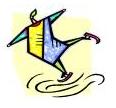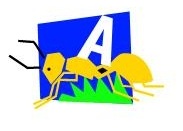|
After years of watching students struggle with spelling, I
began to record which of my students were having difficulty spelling
along with the words that were the most problematic for them. The first
thing I noticed was that it was not only the low readers who experienced
spelling woes; just as many of my voracious readers also struggled. In
the process I discovered that many of these students were continuing to
make the same mistakes no matter how many times I highlighted and
corrected their papers. I wanted them to take more responsibility for
their learning. In order to do so, I realized that I had to directly
teach students how to stop and think about their work as well as support
them by providing constant reminders. Once they stopped to check their
work, they also needed to have specific strategies to help them recall
the correct spelling. Therefore, I began examining ways to help students
become better spellers. Knowing that brains are dynamic and thrive on
novelty, I developed four artful cognitive strategies that use multiple
learning styles to build better spellers.
“MISSISSISSIPPI”―DOES THAT LOOK RIGHT?
It is well known that English spelling is difficult even for
native speakers. For some students, writing spelling words five times,
grouping them into families, or sounding them works well. However,
countless others need something more. Often these are the students who
run on auto-pilot, never stopping to think about spelling. Or they may
know the word is spelled wrong but don’t have a way to help them recall
how to write it correctly. In time, tuning out can become the typical
response when they don’t know how to do something; they get stuck,
negative emotions and anxiety increase, and they shut down.
Students who struggle think that the “smart” kids are just born
smart; answers just “pop into their heads” naturally without effort. It
is true that recalling information is easier for some than others. It
may appear that their friends’ knowledge is more effortless as the
friends look up and then immediately after write down answers. However,
the real difference is that the “smart” kids use strategies. Those for
whom metacognitive strategies do not come naturally look up or stare out
and wait for the answer to pop into their heads. The difference is one
group is intrinsically better able to employ strategies than the other.
Teaching content is only a small percentage of what we do. The
larger and more important task is to set students up to be life-long
learners who take ownership of their learning. To make this occur,
students need to be directly taught metacognitive strategies. Metacognitive refers to strategies used for
- Planning for learning: Deciding how to focus attention, knowing how you learn best, etc. Am I ready to learn?
- Thinking about the learning process while it is happening: What can I do to help me remember?
- Self-monitoring of comprehension/production: Is it making sense to me?
- Evaluating learning afterward: Did my strategy work?
By doing so, students learn how to build and use their
metacognition, so they create their own meaningful, relevant strategies
to help them recall information and become independent learners.
SHOW THEM HOW TO
- Stop…
- Think about a strategy…
- Apply!
I have developed teaching techniques that address various
learning styles. These are to be used as scaffolds until correct
spelling becomes internalized. Because the brain is dynamic and thrives
on patterns and novelty, the process of creating strategies can get
students excited, which lowers the affective filter so there is less
chance of them shutting down as a result of frustration or anxiety.
Taking spelling into this realm helps students realize they can learn
how to spell and have fun doing it.
PICTURE IT!!
This technique entails drawing or making a mental picture that
is associated with the word. Sometimes these work in conjunction with
the word’s meaning; other times it is a “silly” or novel reference.
Students form them via teacher modeling as well as connect them to prior
knowledge.
minute common misspelling: menit, minet, etc.
HabitBreaker: text message: “C u in 6”

This helps students remember that u and in are in the word minute. In
addition, the number 6 provides a way for students to recall that there
are six letters in the word and not five.
office common misspelling: ofis or offis
HabitBreaker: Draw/make mental picture of
ice skating and falling down. Think how you had to get off the ice and go to the office

This idea came from a student who went ice skating for the
first time. I suggested she imagine someone was skating and fell. This
person had to get off the ice and go to the office to call home, get an
ice pack―whatever makes a connection for the student. She drew a picture
and highlighted off and ice. She
not only got it right on her spelling test, but hasn’t misspelled it in
her writing to date. It is very satisfying to see a student stop, think,
and apply.
recital common misspelling: risatel or resital
HabitBreaker: “Don’t rec it Al“

We pretend Al is having a music recital at school. We send him a
text message before the make-believe show telling him not to mess it up
or wreck it. We try to apply our friend Al to as many words that end inal as possible. If we group them using Al, students
are better able to differentiate between similar endings such as el and le.
SAY IT!!
This technique involves using oral phrasing to help recall
spelling. Here are a few examples of some words that are commonly
misspelled in students’ work:
went common misspelling: wint or whent
HabitBreaker: “We went on Wednesday”
this common misspelling: thes
HabitBreaker: “This is good!”
some common misspelling: sum
HabitBreaker: “So give me some!”
Usually these are based on simple words that students can
spell (so, me, we, he, is, an, on, in, etc.) so it is
easy to connect with patterns and words they already know and are
comfortable spelling.
CHARACTER-IZE IT!
This technique helps students differentiate between difficult
word endings by making characters out of them. Below are two characters
we have used in class: Ant and Ed.
Ant is a character students enjoy. Depending on the dialect
used where one lives, the difference between -ant and -ent at the end of
a word is difficult to distinguish orally; often there is no notable
difference at all. Therefore matching words with a character helps
students group them in a way that makes it easier to recall the correct
spelling.
defendant common misspelling: defendent or defendint
HabitBreaker: draw a
defendant―an ant that defends others;

ignorant common misspelling: ignorent or ignorint
HabitBreaker: draw
ignorant―the ant that ignores, that doesn’t pay attention or remember

There is also Ed for various past tense conjugations. These can
also help with basic misspelling. Students draw a picture or go online
to create Ed and use him as a basis of their strategy.
abandoned common misspelling: abandonet, abandit, or ubandid
HabitBreaker: “There was a band on Ed.”


presented common misspelling: presentid or prasentad
HabitBreaker: “Pre sent Ed a letter” or
“Pre presented a letter to Ed.”
 
Students like making up clever examples for Ant and Ed as
well as Al! Many possibilities exist for both teachers and students to
explore.
MORPH-IT!!
Morphing is using a word that a student already knows and
morphing it into target word. Many cartoons involve aliens and machines
transforming or morphing. Students are fascinated with how their
spelling words can morph like a secret code. Sometimes a phrase can be
added to help cement the idea.
stuck
HabitBreaker: luck => tuck => stuck
“What luck, I tuck and got stuck!”
In creating this example, the student knew how to spell luck, so I changed the l into a t and then added s. We live in a
state that experiences the occasional tornado. Therefore we practice tuck and duck. If these words are
not already in students’ vocabulary, then adding them is a good idea.
Here are a couple more examples. Again they began with words
the student knew and morphed into the target word.
pocket
HabitBreaker: lock => locket => Pocket
“I lock my pocket with a locket.”
paint
HabitBreaker: paint rain => pain => paint
“It’s a pain to paint in the rain.”
MOVE IT!!
This technique involves physically moving letters to form words and/or using body movements.
who vs. how commonly confused
HabitBreaker: Write and/or cut out ho and w. Put the w in front of ho to spell who. Then move the w to the end to
make how and repeat. For reinforcement say, “Who
knows how to spell who?”

here, there, where? commonly confused with homophones; hear, their/they’re, were/wear
Habitbreaker: Write and/or cut here, t, and w.
Again move them around to spell “Where? Here? There?” You can add more
movement by asking “Where?” then removing w and
pushing here closer to you. In turn, you can add t to form there, which you can
push away. Not only do all three words share the base word here, but they are also related to placement, which
further supports the strategy.

Most of these techniques are used in combination. This is
the best approach because it aids in better reinforcement and recall.
CONCLUSION
In the process, students build more than just their metacognitive knowledge and improved spelling. They also
- are exposed to new vocabulary and higher-level syntax
- build on and improve reading strategies: chunking, rhyming, root words
- increase ability to see/awareness of patterns
- correct mispronunciation
- develop abstract thinking
Through accessing these techniques, students are active and
have a plan for their own learning. We don’t want students to surrender
to the idea of working on autopilot and winging it, in hopes of
succeeding. Students can take possession of their learning by making and
using their own meaningful and relevant strategies to learn new
information. This is key to creating independent, confident, competent,
and happy life-long learners.
REFERENCE
Brown, H. D. (2007). Principles of language learning
and teaching (5th ed.). New York: Pearson Education.
Gelene Strecker-Sayer,strecker-sayergelene@rockwood.k12.mo.us,
is a national board-certified teacher and Fulbright Scholar who has
presented at the state and national levels on various topics such as
pull-out ESOL programs, standards-based curriculum writing,
international adoptees and their language learning, school
collaboration, and the correction of common grammatical misuses of
English. Currently she teaches K-12 ESOL students for Rockwood Public
Schools in St. Louis, Missouri, USA.
Editor’s Note: To receive samples of 40
words/HabitBreaker kinesthetic letters and/or spelling cards, please
contact the author at the e-mail listed above. | 
